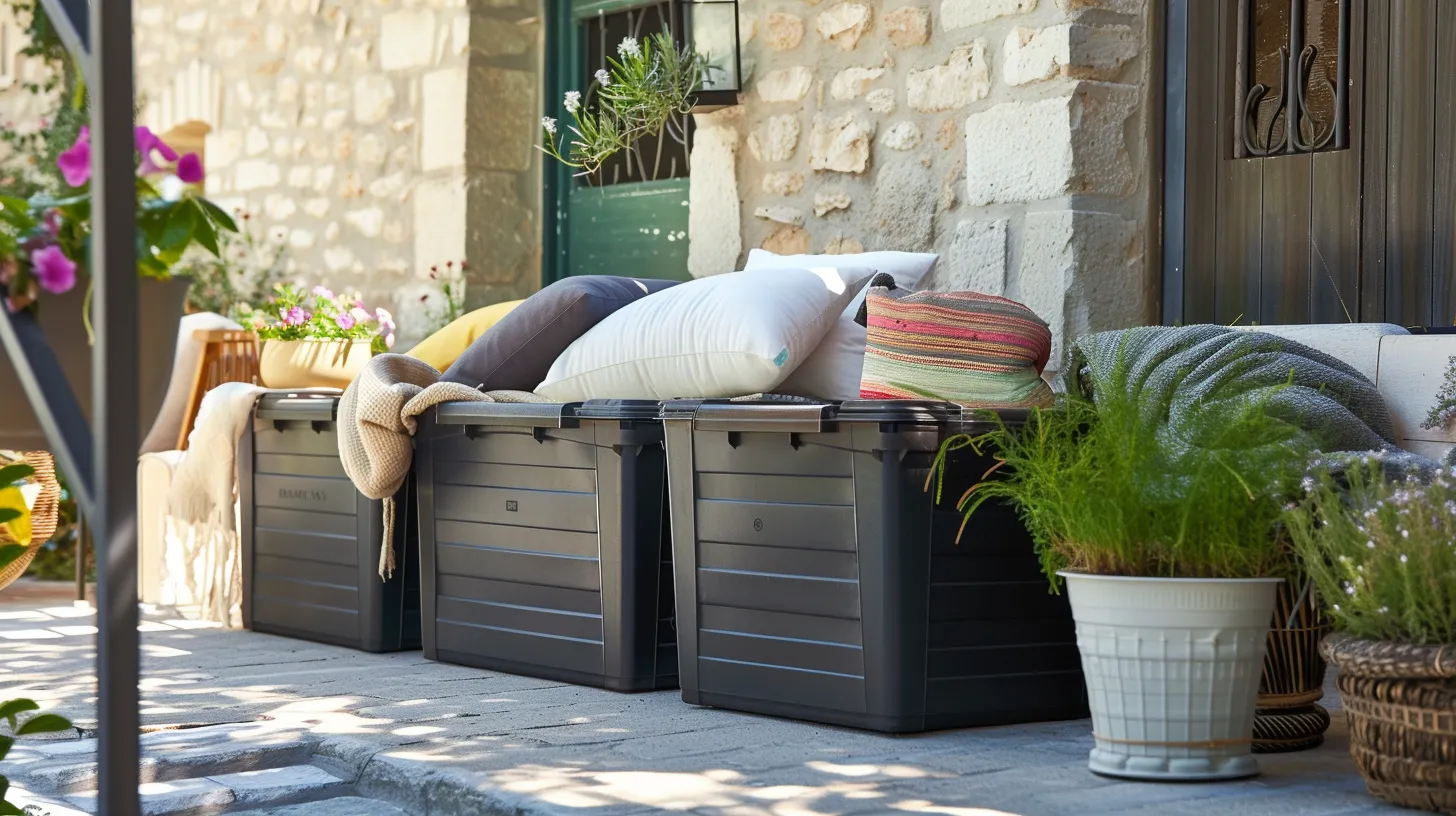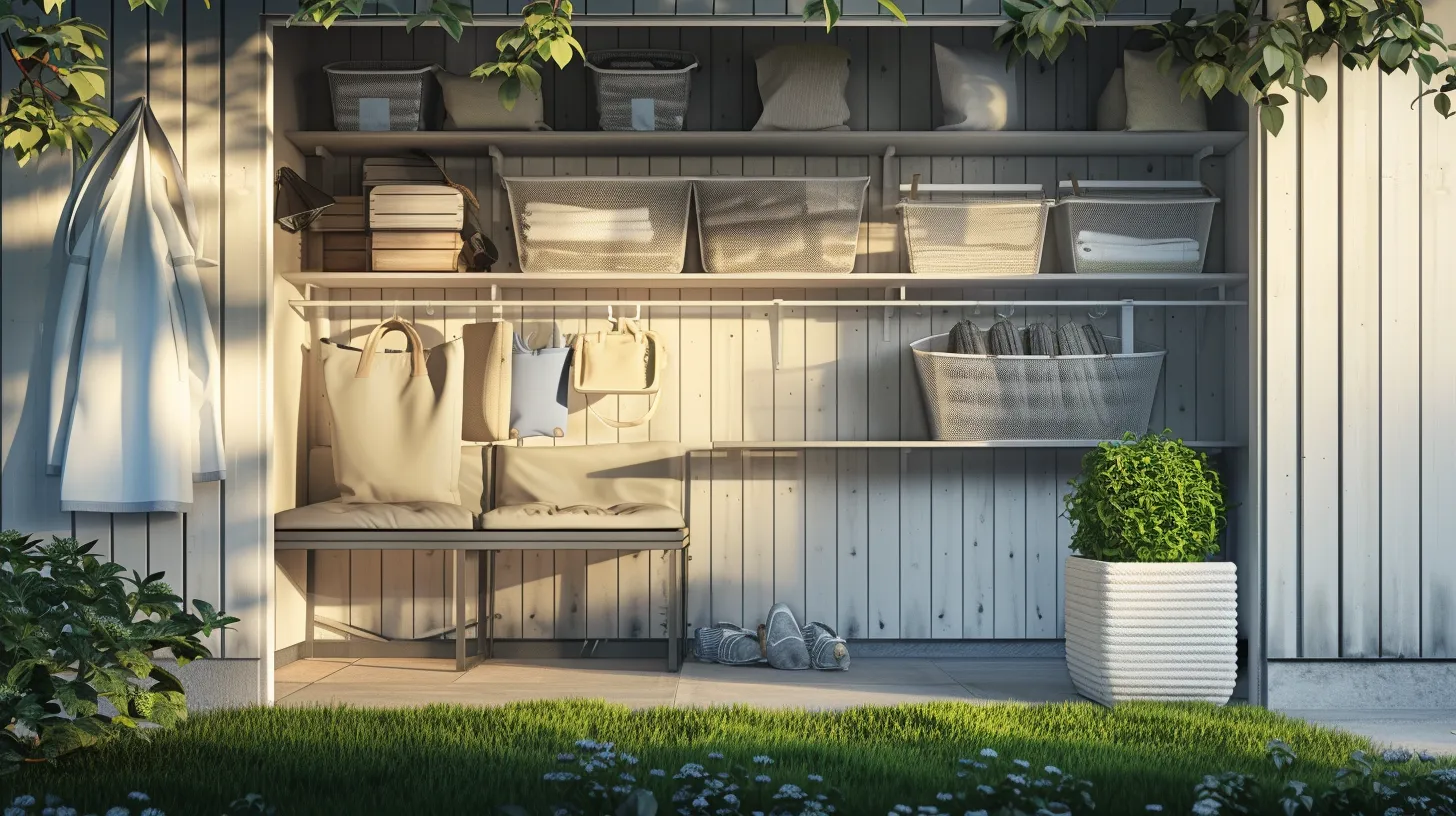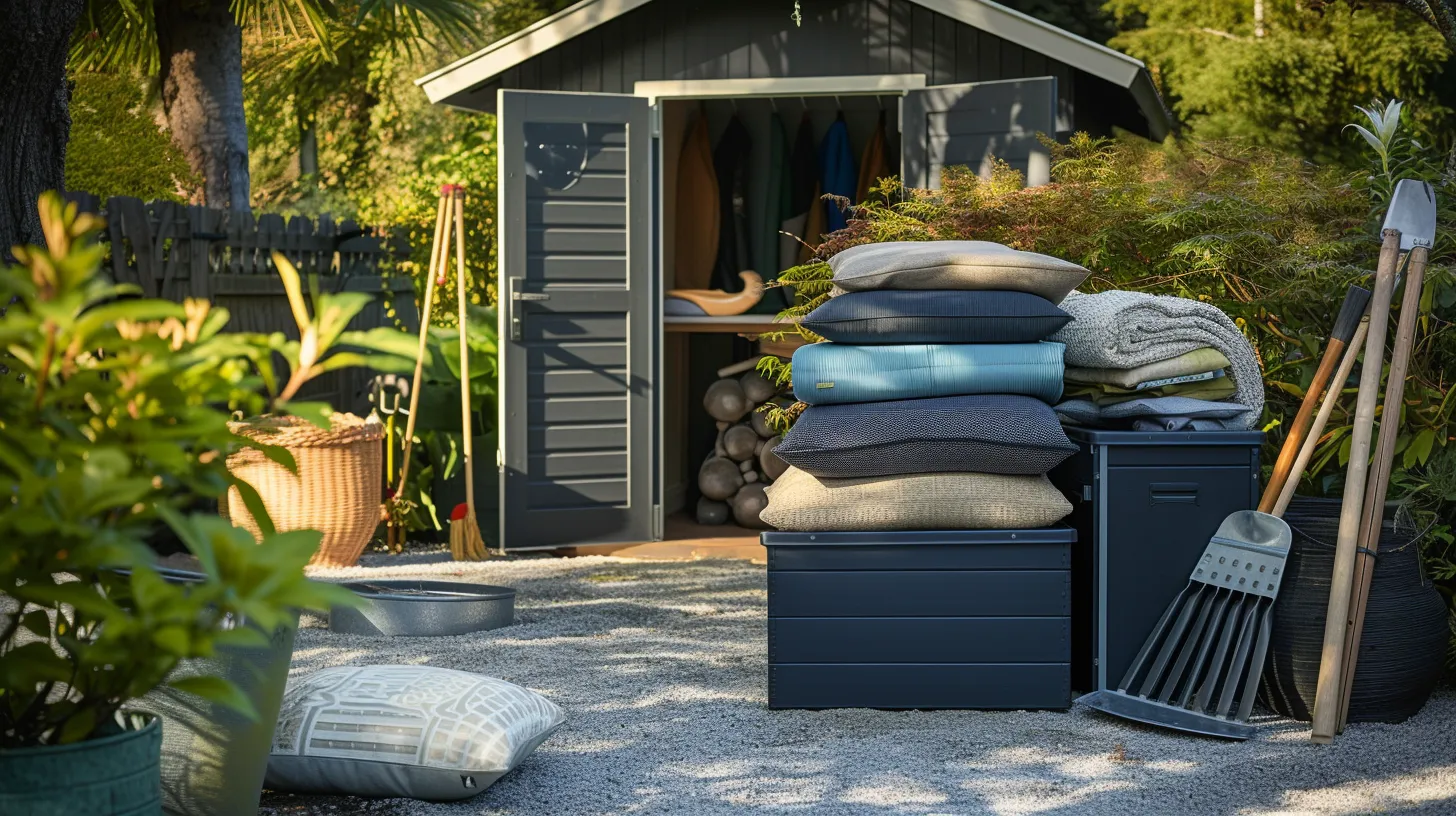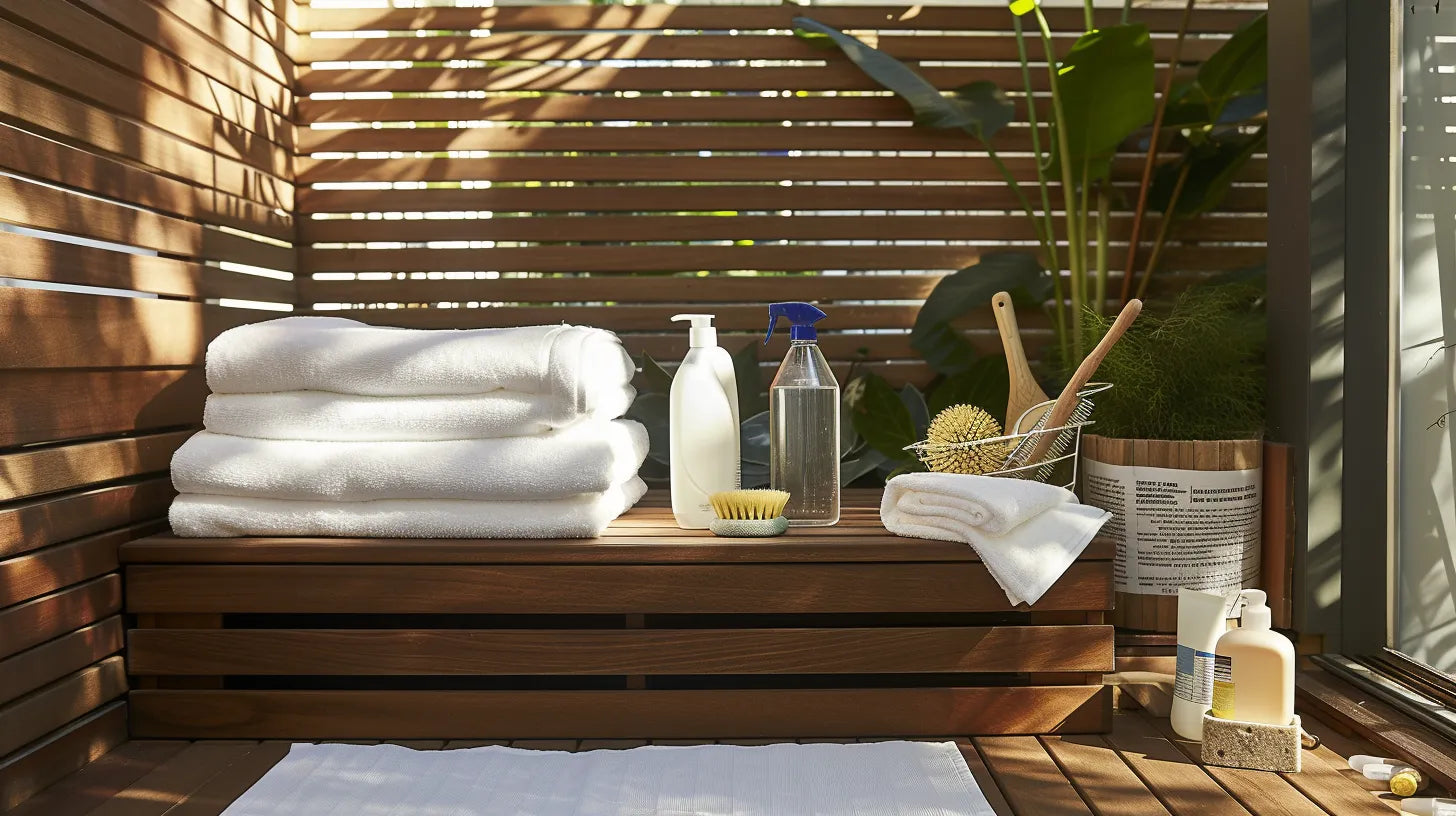The appropriate storage of outdoor cushions is an integral aspect of maintaining their longevity and ensuring they remain vibrant and comfortable for years to come. This process begins with meticulous cleaning and drying, adhering to the manufacturer's guidelines to prevent any damage to the materials.
However, the choice of storage containers and the conditions of the storage environment play a pivotal role in safeguarding these cushions against moisture, pests, and the fluctuating temperatures that can lead to their deterioration. While many may opt for airtight containers for their perceived convenience, the decision between these and breathable fabric bags can significantly impact the condition of your cushions, depending on your local climate and storage space.
As we explore the nuances of selecting the ideal storage solutions and locations, along with the necessary seasonal maintenance routines, it becomes evident that a strategic approach is required to protect your outdoor cushions effectively. The question then arises, how does one navigate these decisions to ensure their outdoor cushions are stored in a manner that not only preserves but enhances their longevity?
Proper Cleaning Techniques
To ensure the longevity and appearance of outdoor cushions, it is essential to employ proper cleaning techniques that cater to the specific materials and types of stains encountered. Proper care begins with routine maintenance to keep your patio cushions looking their best. For general cleaning, mixing a mild detergent with water is recommended. This solution can effectively clean outdoor furniture fabrics without causing damage. It's important to consult the manufacturer's instructions for specific cleaning guidelines to avoid any mishaps.
For cushions with removable covers, machine washing is a convenient option, while non-removable covers can be scrubbed using soap and warm water. In cases of stubborn stains, mold, and mildew, a mixture of white vinegar or bleach with water can be used, ensuring the cushions are thoroughly rinsed and allowed to air dry before storage. This step is crucial in preventing mold and mildew growth, which can degrade fabric quality over time.
When it comes to storing outdoor cushions, it's vital to choose a storage solution that provides protection from moisture and pests. Options such as fabric storage bags, plastic bins, deck boxes, or furniture covers are ideal for keeping your cushions in pristine condition. Ensuring they are stored in a dry, cool, and well-ventilated area off the ground will further safeguard them against damage, ensuring they are ready for use when the season changes.
Selecting Storage Containers

After ensuring outdoor cushions are properly cleaned and dried, the next step involves selecting the right storage containers to provide optimal protection from external elements. Finding the perfect solution to store outdoor cushions is crucial in extending their lifespan and maintaining their appearance.
When choosing where to store patio cushions during off-seasons or inclement weather, consider the following aspects:
-
Size Accommodation : Ensure the storage option can comfortably fit your cushions without squashing or misshaping them. This could mean opting for spacious deck boxes or sizeable plastic bins.
-
Moisture Protection : Look for waterproof or water-resistant options like airtight containers or storage bags specifically designed to shield storing cushions from moisture and water damage.
-
Durability and Security : Durable storage solutions like a sturdy storage bench or heavy-duty fabric storage options with secure lids or closures will protect cushions from outdoor elements, pests, and dust.
-
Ease of Access : Select storage containers that offer convenience in retrieval and placement, such as cushion covers that double as storage or easily accessible deck boxes.
Ideal Storage Locations

Identifying the optimal location for storing outdoor cushions is crucial for ensuring their longevity and maintaining their quality. When planning to store patio furniture cushions, it's essential to choose a dry environment with consistent temperature and humidity.
While many might initially consider a shed or garage for storing outdoor cushions, these locations can experience fluctuating temperature and humidity levels, which may harm the cushions. Instead, opt for finished basements or climate-controlled storage units, which offer a more stable environment.
To keep them in great condition, store your cushions off the ground and away from direct sunlight to prevent moisture, pests, and fabric fading. In high humidity areas, storing your outdoor cushions in airtight containers, fabric bags, or breathable deck boxes can offer additional protection. Moreover, utilizing interior closets or elevated shelves can further safeguard your cushions, helping to prolong their lifespan.
Protecting From Moisture

Having pinpointed the optimal storage locations for outdoor cushions, it is equally imperative to focus on strategies for moisture protection to ensure their preservation. Moisture is an ever-present threat that can degrade the quality of your outdoor cushions, affecting their function and appearance.
To keep your Patio Furniture's cushions dry and in prime condition, consider these effective methods for storing your Outdoor Cushions away from moisture:
-
Use airtight containers : These are ideal for preventing moisture and pests from damaging your cushions. Make sure the containers are clean and dry before storing the cushions inside.
-
Opt for breathable fabric bags : In areas of high humidity, breathable bags can prevent mold and mildew by allowing air to circulate.
-
Wrap the cushions in tarps or sheets : This acts as an additional barrier against moisture. Heavy-duty trash bags can also be used for this purpose, but ensure they are not sealed to allow air flow.
-
Place moisture-absorbing packets : Inside the storage containers or bags, these packets will help keep the cushions dry by absorbing any excess moisture.
Seasonal Maintenance Tips

To ensure the longevity and appearance of outdoor cushions, seasonal maintenance is an essential practice that should not be overlooked. Before storing them for the season, it's crucial to clean and let the cushions dry completely. This step prevents the degradation that can occur when moisture is trapped within the fabric or filling. Moisture can lead to mold, mildew, and unpleasant odors, so thorough drying is vital.
When selecting a storage location, keep the cushions away from areas prone to moisture or pest intrusion. A dry environment with consistent temperature and humidity levels is ideal. For those who live in an area without a suitable outdoor patio storage option, a finished basement or a climate-controlled storage unit is a great option. These spaces offer protection from the elements and maintain conditions that prevent the growth of mold and mildew.
Additionally, try to avoid exposure to direct sunlight when storing cushions, as UV rays can fade and weaken fabric over time. For homeowners who live in climates with frequent evening dew or unexpected rainfall, consider bringing outdoor cushions indoors overnight. This practice can significantly extend their lifespan and maintain their aesthetic appeal.










